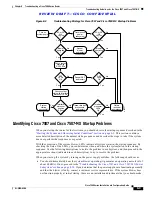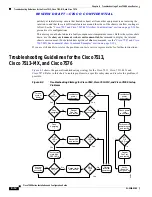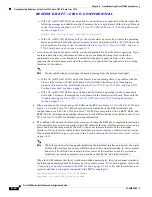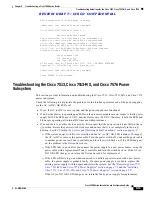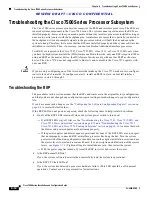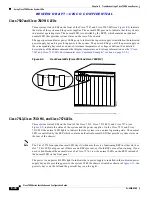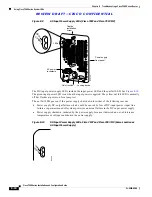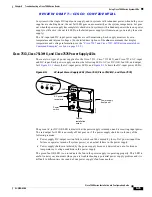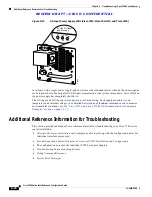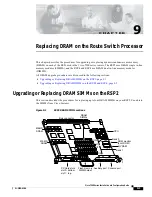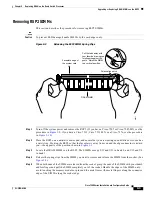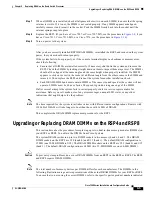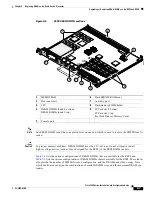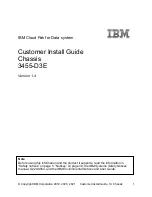
R E V I E W D R A F T — C I S C O C O N F I D E N T I A L
8-18
Cisco 7500 Series Installation and Configuration Guide
OL-5008-03 B0
Chapter 8 Troubleshooting a Cisco 7500 Series Router
Troubleshooting the Cisco 7500 Series Processor Subsystem
Troubleshooting the Cisco 7500 Series Processor Subsystem
The Cisco 7500 series processor subsystem comprises the RSPs and interface processors. The RSPs are
required system components in the Cisco 7500 series. The system cannot operate unless the RSPs are
installed properly; however, the system can operate without any interface processors installed as long as
none are in partial contact with the backplane pins. An interface processor that is partially connected to
the backplane will send incomplete signals to the processor, which will fault the bus and cause the
system to hang. Therefore, first ensure that the RSPs are installed properly and the system software has
initialized successfully. Then, if necessary, you can troubleshoot individual interface processors.
Two RSPs are required in the Cisco 7507, Cisco 7507-MX, Cisco 7513, or Cisco 7513-MX only when
you have the high-system availability (HSA) feature enabled; otherwise, only one RSP is required. When
using an RSP8 as the master device, the HSA feature functions only with another RSP8 as the slave
device. The Cisco 7576 does not support HSA. Router A and router B in the Cisco 7576 operate with
only one RSP.
Caution
If you are only configuring one of the two routers that make up the Cisco 7576, make sure to configure
router A instead of router B. To configure router A, install an RSP4 in slot 6, and install interface
processors in slots 0 through 5.
Troubleshooting the RSP
The procedures in this section assume that the RSPs and router are in the original factory configuration,
and that you have not changed any configuration register settings or made changes to your configuration
file.
If you have made such changes, see the
“Configuring the Software Configuration Register” section on
page 4-4
to reselect default values.
If the RSP LEDs do not go on as expected, check the following items to help isolate the problem.
•
Do all of the RSP LEDs remain off when the system power switch is turned on?
–
If all RSP LEDs stay off, first see the
“Troubleshooting the Cisco 7513, Cisco 7513-MX, and
Cisco 7576 Power Subsystem” section on page 8-15
and
“Troubleshooting the Cisco 7513,
Cisco 7513-MX, and Cisco 7576 Cooling Subsystem” section on page 8-16
to ensure that both
the blower and power supplies are functioning properly.
–
If the power supplies and blower appear operational but none of the RSP LEDs are on, suspect
that an improperly connected RSP or interface processor has hung the bus. Turn the system
power switch off and, on each processor module, loosen the captive installation screws and use
the ejector levers to eject and reseat each board. (For a description and illustration of the ejector
levers, see
Figure 3-12
.) Tighten all captive installation screws, then restart the system.
–
With the power supplies turned off, reseat the RSP in its slot and restart the router.
•
Is the RSP normal LED on?
If yes, the system software has initialized successfully, and the system is operational.
•
Is the RSP CPU halt LED on?
If yes, the system has detected a processor hardware failure. (This LED should be off in normal
operation.) Contact a service representative for instructions.






